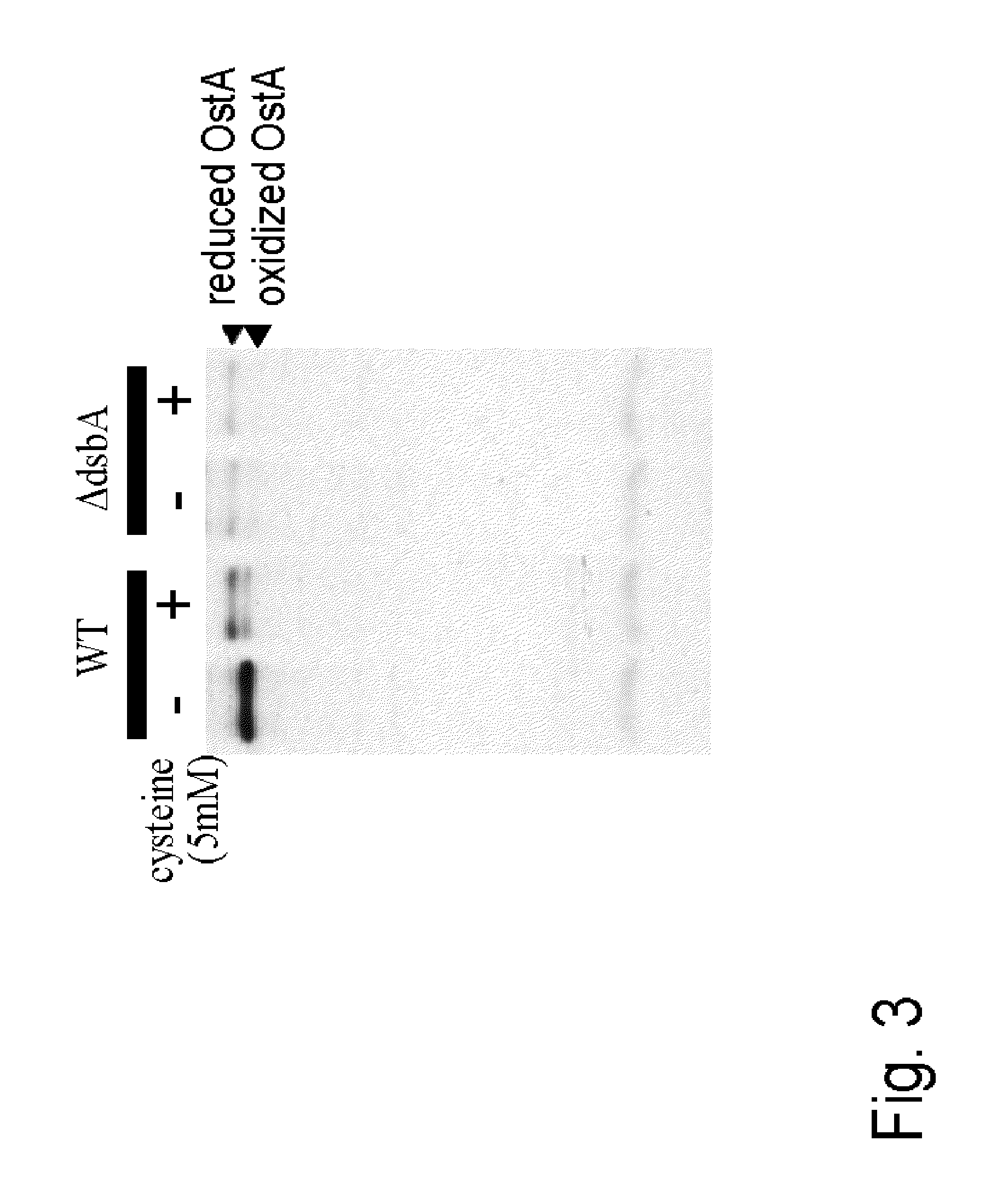L-cysteine-producing bacterium and a method for producing L-cysteine
a technology of lcysteine and bacterium, which is applied in the field of lcysteine-producing bacteria and a method for producing lcysteine, can solve the problems of insufficient ability of bacteria to select a cysteine pair into which the bond is introduced, and the original structure cannot be expected to have, so as to improve the ability of lcysteine-producing bacteria
- Summary
- Abstract
- Description
- Claims
- Application Information
AI Technical Summary
Benefits of technology
Problems solved by technology
Method used
Image
Examples
examples
[0104]Hereinafter, the present invention will be explained more specifically with reference to the following non-limiting examples. In the following descriptions, cysteine means L-cysteine.
[0105](1) Screening of Clones Showing Cysteine Sensitivity
[0106]In order to comprehensively search for genes participating in cysteine resistance, the Keio collection (single gene-knock out library except for essential genes of E. coli BW25113, Baba, T, et al., 2006, Mol. Syst. Biol., 2:2006.0008) was screened for clones showing sensitivity to cysteine.
[0107](1-1) Screening of Keio Collection for Clones Showing Cysteine Sensitivity
[0108]The 3,985 clones of the Keio collection were cultured at 37° C. for 15 hours in 0.5 ml of LB liquid medium. This culture medium was stamped on LB agar media containing cysteine at different concentrations (0, 15, 20, 25 mM), and culture was performed overnight at 37° C. Clones that were cysteine sensitive at the growth inhibition concentration of cysteine for wild-...
PUM
| Property | Measurement | Unit |
|---|---|---|
| temperature | aaaaa | aaaaa |
| temperature | aaaaa | aaaaa |
| culture temperature | aaaaa | aaaaa |
Abstract
Description
Claims
Application Information
 Login to View More
Login to View More - R&D
- Intellectual Property
- Life Sciences
- Materials
- Tech Scout
- Unparalleled Data Quality
- Higher Quality Content
- 60% Fewer Hallucinations
Browse by: Latest US Patents, China's latest patents, Technical Efficacy Thesaurus, Application Domain, Technology Topic, Popular Technical Reports.
© 2025 PatSnap. All rights reserved.Legal|Privacy policy|Modern Slavery Act Transparency Statement|Sitemap|About US| Contact US: help@patsnap.com



